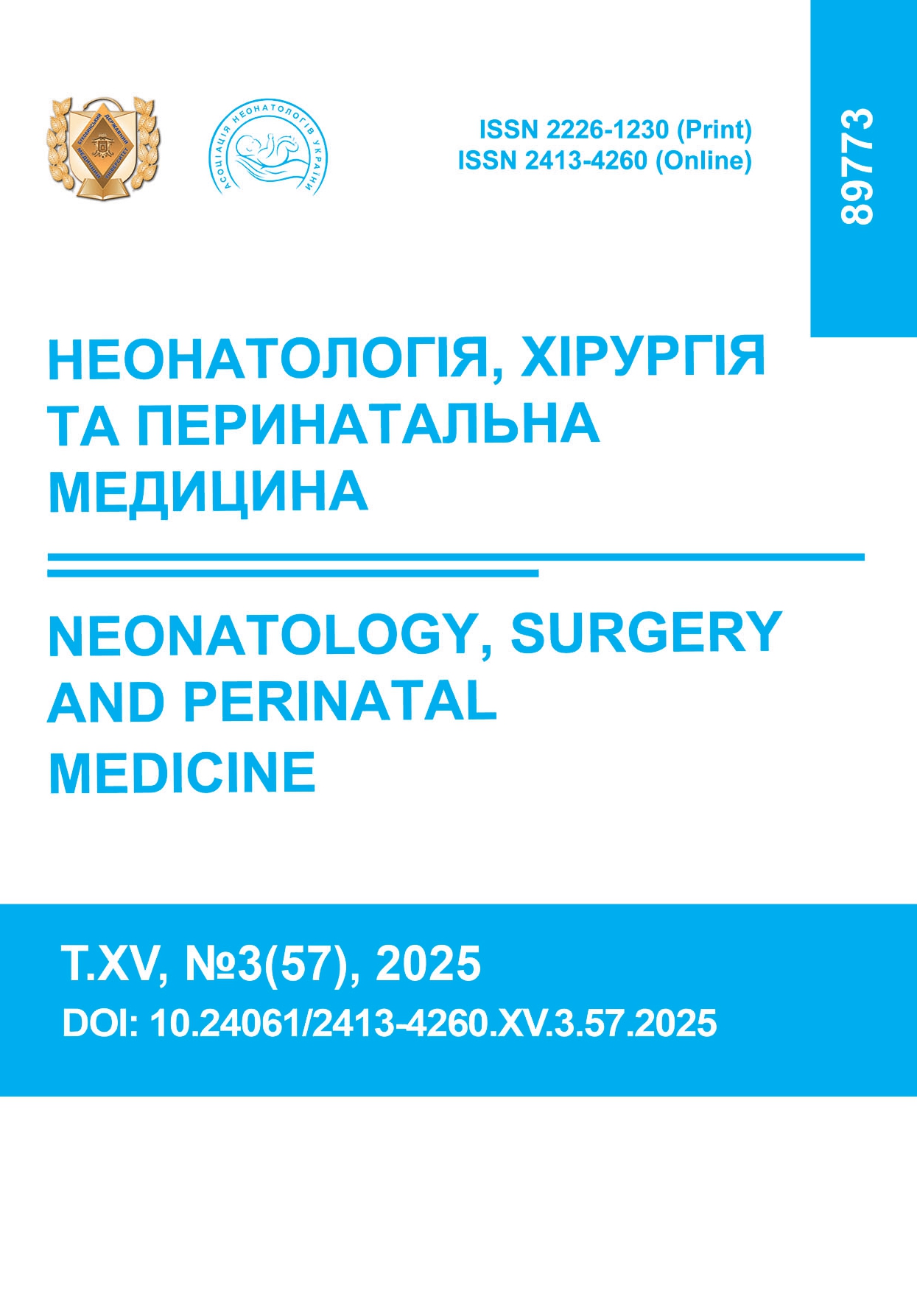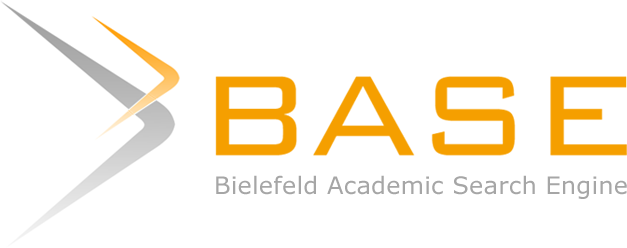ОСОБЛИВОСТІ ДИХАЛЬНОЇ ПІДТРИМКИ НЕМОВЛЯТ З ТЯЖКОЮ БРОНХОЛЕГЕНЕВОЮ ДИСПЛАЗІЄЮ
DOI:
https://doi.org/10.24061/2413-4260.XV.3.57.2025.24Ключові слова:
бронхолегенева дисплазія; дихальна підтримка; механічна вентиляція легень; передчасно народжені немовлята.Анотація
Покращення показників виживання надзвичайно недоношених немовлят не забезпечило зменшення частоти бронхолегеневої дисплазії (БЛД), яка все ще діагностується у значної частки таких дітей. Незважаючи на наявність декількох ефективних методів профілактики цього захворювання, у частини передчасно народжених немовлят формуються тяжкі форми БЛД, і такі діти можуть потребувати тривалої ендотрахеальної штучної вентиляції легень (ШВЛ). Упродовж останніх років основна увага дослідників та клініцистів була зосереджена на профілактиці БЛД, а лікування пацієнтів зі встановленим тяжким захворюванням переважно було емпіричним. У цьому огляді представлено сучасну концепцію фізіологічно обґрунтованої стратегії ШВЛ у дітей зі встановленим діагнозом тяжкої БЛД, яка відрізняється від підходів, які традиційно використовують під час лікування респіраторного дистрес-синдрому. Допомога немовлятам із тяжкою БЛД потребує застосування моделі лікування хронічного захворювання й іншої мети лікувальних утручань порівняно з використанням стандартних підходів, які переважно практикують у відділеннях інтенсивної терапії новонароджених щодо пацієнтів з гострою патологією.
Посилання
Stoll BJ, Hansen NI, Bell EF, Walsh MC, Carlo WA, Shankaran S, et al. Trends in care practices, morbidity, and mortality of extremely preterm neonates, 1993-2012. JAMA. 2015;314(10):1039-51. DOI: https://doi.org/10.1001/jama.2015.10244. PMID: 26348753; PMCID: PMC4787615.
Nakashima T, Inoue H, Sakemi Y, Ochiai M, Yamashita H, Ohga S. Trends in bronchopulmonary dysplasia among extremely preterm infants in Japan, 2003-2016. J Pediatr. 2021;230:119-25.e7. DOI: https://doi.org/10.1016/j.jpeds.2020.11.041. PMID: 33246013.
Sindelar R, Shepherd EG, Agren J, Panitch HB, Abman SH, Nelin LD. Established severe BPD: is there a way out? Change of ventilatory paradigms. Pediatr Res. 2021;90(6):1139-46. DOI: https://doi.org/10.1038/s41390-021-01558-8. PMID: 34012026.
Higgins RD, Jobe AH, Koso-Thomas M, Bancalari E, Viscardi RM, Hartert TV, et al. Bronchopulmonary dysplasia: executive summary of a workshop. J Pediatr. 2018;197:300-8. DOI: https://doi.org/10.1016/j.jpeds.2018.01.043. PMID: 29551318; PMCID: PMC5970962
Charafeddine L, D’Angio CT, Phelps DL. Atypical chronic lung disease patterns in neonates. Pediatrics. 1999;103(4 Pt 1):759-65. DOI: https://doi.org/10.1542/peds.103.4.759. PMID: 10103299.
Laughon M, Allred EN, Bose C, O'Shea TM, Van Marter LJ, Ehrenkranz RA, et al. Patterns of respiratory disease during the first 2 postnatal weeks in extremely premature infants. Pediatrics. 2009;123(4):1124-31. DOI: https://doi.org/10.1542/peds.2008-0862. PMID: 19336371; PMCID: PMC2852187.
Keszler M, Sant’Anna G. Mechanical ventilation and bronchopulmonary dysplasia. Clin Perinatol. 2015;42(4):
-96. DOI: https://doi.org/10.1016/j.clp.2015.08.006. PMID: 26593078.
Jobe AH. Effects of chorioamnionitis on the fetal lung. Clin Perinatol. 2012;39(3):441-57. DOI: https://doi.org/10.1016/j.clp.2012.06.010. PMID: 22954262; PMCID: PMC3437038.
Lui K, Lloyd J, Ang E, Rynn M, Gupta JM. Early changes in respiratory compliance and resistance during the development of bronchopulmonary dysplasia in the era of surfactant therapy. Pediatr Pulmonol. 2000;30(4):282-90. DOI: https://doi.org/10.1002/1099-0496(200010)30:4%3C282::aid-ppul2%3E3.0.co;2-d. PMID: 11015127.
Jarriel WS, Richardson P, Knapp RD, Hansen TN. A nonlinear regression analysis of nonlinear, passive deflation flow-volume plots. Pediatr Pulmonol. 1993;15(3):175-82. DOI: https://doi.org/10.1002/ppul.1950150309. PMID: 8327281.
Keszler M, Nassabeh-Montazami S, Abubakar K. Evolution of tidal volume requirement during the first 3 weeks of life in infants <800 g ventilated with volume guarantee. Arch Dis Child Fetal Neonatal Ed. 2009;94(4):F279-82. DOI: https://doi.org/10.1136/adc.2008.147157. PMID: 19060010.
Kallapur SG, Pryhuber GS, editors. Updates on neonatal chronic lung disease. PA: Elsevier; 2020. 339p. Chapter 17. Keszler M, McKinney R. Ventilation strategies in bronchopulmonary dysplasia: where we are and where we should be going? 257-67. DOI: https://doi.org/10.1016/B978-0-323-68353-1.00017-8
Reiterer F, Eber E, Zach MS, Muller W. Management of severe congenital tracheobronchomalacia by continuous positive airway pressure and tidal breathing flow-volume loop analysis. Pediatr Pulmonol. 1994;17(6):401-3. DOI: https://doi.org/10.1002/ppul.1950170612. PMID: 8090613.
Gibbs K, Jensen EA, Alexiou S, Munson D, Zhang H. Ventilation strategies in severe bronchopulmonary dysplasia. Neoreviews. 2020;21(4):e226-37. DOI: https://doi.org/10.1542/neo.21-4-e226. PMID: 32238485.
Bancalari E, editors. The newborn lung: neonatology questions and controversies. Third edition. PA: Elsevier; 2019. 400p. Chapter 22. Nelin LD, Abman SH, Panitch HB. A physiology-based approach to the respiratory care of children with severe bronchopulmonary dysplasia. p.363-85. DOI: https://doi.org/10.1016/B978-0-323-54605-8.00022-2
Baraldi E, Filippone M, Trevisanuto D, Zanardo V, Zacchello F. Pulmonary function until two years of life in infants with bronchopulmonary dysplasia. Am J Respir Crit Care Med. 1997;155(1):149-55. DOI: https://doi.org/10.1164/ajrccm.155.1.9001304. PMID: 9001304.
Bhutani VK, Ritchie WG, Shaffer TH. Acquired tracheomegaly in very preterm neonates. Am J Dis Child. 1986; 140(5):449-52. DOI: https://doi.org/10.1001/archpedi.1986.02140190059026. PMID: 3962939.
Aly H, Abdel-Hady H, editors. Respiratory management of newborns [Internet]. IntechOpen; 2016[cited 2025 Apr 5]. Shepherd EG, Lynch SK, Malleske DT, Nelin LD. Mechanical ventilation of the infant with severe
bronchopulmonary dysplasia. 83-94. Available from: https://www.intechopen.com/chapters/51148 DOI: http://dx.doi.org/10.5772/63691
Tepper RS, Morgan WJ, Cota K, Taussig LM. Expiratory flow limitation in infants with bronchopulmonary dysplasia. J Pediatr. 1986;109(6):1040-6. DOI: https://doi.org/10.1016/s0022-3476(86)80296-7. PMID: 3783328.
Bhandari V, editors. Tantalizing therapeutics in bronchopulmonary dysplasia. Elsevier Academic Press; 2020. 240p. Chapter 3. Keszler M, Gupta A. Next generation ventilation strategies to prevent and manage bronchopulmonary dysplasia. p.47-74. DOI: https://doi.org/10.1016/B978-0-12-818987-0.00003-5
Abman SH, Collaco JM, Shepherd EG, Keszler M, Cuevas-Guaman M, Welty SE, et al. Interdisciplinary care of children with severe bronchopulmonary dysplasia. J Pediatr. 2017;181:12-28.e11. DOI: https://doi.org/10.1016/j.jpeds.2016.10.082. PMID: 27908648.
Schmalisch G. Current methodological and technical limitations of time and volumetric capnography in newborns. Biomed Eng Online. 2016;15(1):104. DOI: https://doi.org/10.1186/s12938-016-0228-4. PMID: 27576441; PMCID: PMC5004292.
Singh BS, Gilbert U, Singh S, Govindaswami B. Sidestream microstream end tidal carbon dioxide measurements and blood gas correlations in neonatal intensive care unit. Pediatr Pulmonol. 2013;48(3):250-6. DOI: https://doi.org/10.1002/ppul.22593. PMID: 22589000.
Keszler M. Volume-targeted ventilation: one size does not fit all. Evidence-based recommendations for successful use. Arch Dis Child Fetal Neonatal Ed. 2019;104(1):F108-12. DOI: https://doi.org/10.1136/archdischild-2017-314734. PMID: 30068668.
Raji PK, Lakshminrusimha S, Satya PK, Vidyasagar D, editors. Essentials of neonatal ventilation. NY: Elsevier; 2018. Bhandari V, Bhandari A, Rajiv PK. Bronchopulmonary dysplasia. p.461-90.
Gilfillan M, Bhandari A, Bhandari V. Diagnosis and management of bronchopulmonary dysplasia. BMJ. 2021;375:n1974. DOI: https://doi.org/10.1136/bmj.n1974. PMID: 34670756.
Palm K, Simoneau T, Sawicki G, Rhein L. Assessment of current strategies for weaning premature infants from supplemental oxygen in the outpatient setting. Adv Neonatal Care. 2011;11(5):349-56. DOI: https://doi.org/10.1097/anc.0b013e318229be3d. PMID: 22123406.
Friedlich P, Subramanian N, Sebald M, Noori S, Seri I. Use of high-frequency jet ventilation in neonates with hypoxemia refractory to high-frequency oscillatory ventilation. J Matern Fetal Neonatal Med. 2003;13(6):398-402. DOI: https://doi.org/10.1080/jmf.13.6.398.402. PMID: 12962265.
Plavka R, Dokoupilova M, Pazderova L, Kopecky P, Sebron V, Zapadlo M, et al. High-frequency jet ventilation improves gas exchange in extremely immature infants with evolving chronic lung disease. Am J Perinatol. 2006;23(8):467-72. DOI: https://doi.org/10.1055/s-2006-954821. PMID: 17094040.
Levit OL, Shabanova V, Bazzy-Asaad A, Bizzarro MJ, Bhandari V. Risk factors for tracheostomy requirement in extremely low birth weight infants. J Matern Fetal Neonatal Med. 2018;31(4):447-52. DOI: https://doi.org/10.1080/14767058.2017.1287895. PMID: 28139937.
Murthy K, Porta NFM, Lagatta JM, Zaniletti I, Truog WE, Grover TR, et al. Inter-center variation in death or tracheostomy placement in infants with severe bronchopulmonary dysplasia. J Perinatol. 2017;37(6):723-7. DOI: https://doi.org/10.1038/jp.2016.277. PMID: 28181997.
Luo J, Shepard S, Nilan K, Wood A, Monk HM, Jensen EA, et al. Improved growth and developmental activity post tracheostomy in preterm infants with severe BPD. Pediatr Pulmonol. 2018;53(9):1237-44. DOI: https://doi.org/10.1002/ppul.24087. PMID: 29972635; PMCID: PMC6335026.
DeMauro SB, D’Agostino JA, Bann C, Bernbaum J, Gerdes M, Bell EF, et al. Developmental outcomes of very preterm infants with tracheostomies. J Pediatr. 2014;164(6):1303-10.e1302. DOI: https://doi.org/10.1016/j.jpeds.2013.12.014. PMID: 24472229; PMCID: PMC4035374.
Rane S, Bathula S, Thomas RL, Natarajan G. Outcomes of tracheostomy in the neonatal intensive care unit: is there an optimal time? J Matern Fetal Neonatal Med. 2014;27(12):1257-61. DOI: https://doi.org/10.3109/14767058.2013.860438. PMID: 24215607.
##submission.downloads##
Опубліковано
Як цитувати
Номер
Розділ
Ліцензія

Ця робота ліцензується відповідно до Creative Commons Attribution 4.0 International License.
Автори, які публікуються у цьому журналі, погоджуються з наступними умовами:
- Автори залишають за собою право на авторство своєї роботи та передають журналу право першої публікації цієї роботи на умовах ліцензії Creative Commons Attribution License, котра дозволяє іншим особам вільно розповсюджувати опубліковану роботу з обов'язковим посиланням на авторів оригінальної роботи та першу публікацію роботи у цьому журналі.
- Автори мають право укладати самостійні додаткові угоди щодо неексклюзивного розповсюдження роботи у тому вигляді, в якому вона була опублікована цим журналом (наприклад, розміщувати роботу в електронному сховищі установи або публікувати у складі монографії), за умови збереження посилання на першу публікацію роботи у цьому журналі.
- Політика журналу дозволяє і заохочує розміщення авторами в мережі Інтернет (наприклад, у сховищах установ або на особистих веб-сайтах) рукопису роботи, як до подання цього рукопису до редакції, так і під час його редакційного опрацювання, оскільки це сприяє виникненню продуктивної наукової дискусії та позитивно позначається на оперативності та динаміці цитування опублікованої роботи (див. The Effect of Open Access).
Критерії авторського права, форми участі та авторства
Кожен автор повинен був взяти участь в роботі, щоб взяти на себе відповідальність за відповідні частини змісту статті. Один або кілька авторів повинні нести відповідальність в цілому за поданий для публікації матеріал - від моменту подачі до публікації статті. Авторитарний кредит повинен грунтуватися на наступному:
- істотність частини вклада в концепцію і дизайн, отри-мання даних або в аналіз і інтерпретацію результатів дослідження;
- написання статті або критичний розгляд важливості її інтелектуального змісту;
- остаточне твердження версії статті для публікації.
Автори також повинні підтвердити, що рукопис є дійсним викладенням матеріалів роботи і що ні цей рукопис, ні інші, які мають по суті аналогічний контент під їх авторством, не були опубліковані та не розглядаються для публікації в інших виданнях.
Автори рукописів, що повідомляють вихідні дані або систематичні огляди, повинні надавати доступ до заяви даних щонайменше від одного автора, частіше основного. Якщо потрібно, автори повинні бути готові надати дані і повинні бути готові в повній мірі співпрацювати в отриманні та наданні даних, на підставі яких проводиться оцінка та рецензування рукописи редактором / членами редколегії журналу.
Роль відповідального учасника.
Основний автор (або призначений відповідальний автор) буде виступати від імені всіх співавторів статті в якості основного кореспондента при листуванні з редакцією під час процесу її подання та розгляду. Якщо рукопис буде прийнята, відповідальний автор перегляне відредагований машинописний текст і зауваження рецензентів, прийме остаточне рішення щодо корекції і можливості публікації представленої рукописи в засобах масової інформації, федеральних агентствах і базах даних. Він також буде ідентифікований як відповідальний автор в опублікованій статті. Відповідальний автор несе відповідальність за подтверждленіе остаточного варіанта рукопису. Відповідальний автор несе також відповідальність за те, щоб інформація про конфлікти інтересів, була точною, актуальною і відповідала даним, наданим кожним співавтором.Відповідальний автор повинен підписати форму авторства, що підтверджує, що всі особи, які внесли істотний внесок, ідентифіковані як автори і що отримано письмовий дозвіл від кожного учасника щодо публікації представленої рукописи.
















